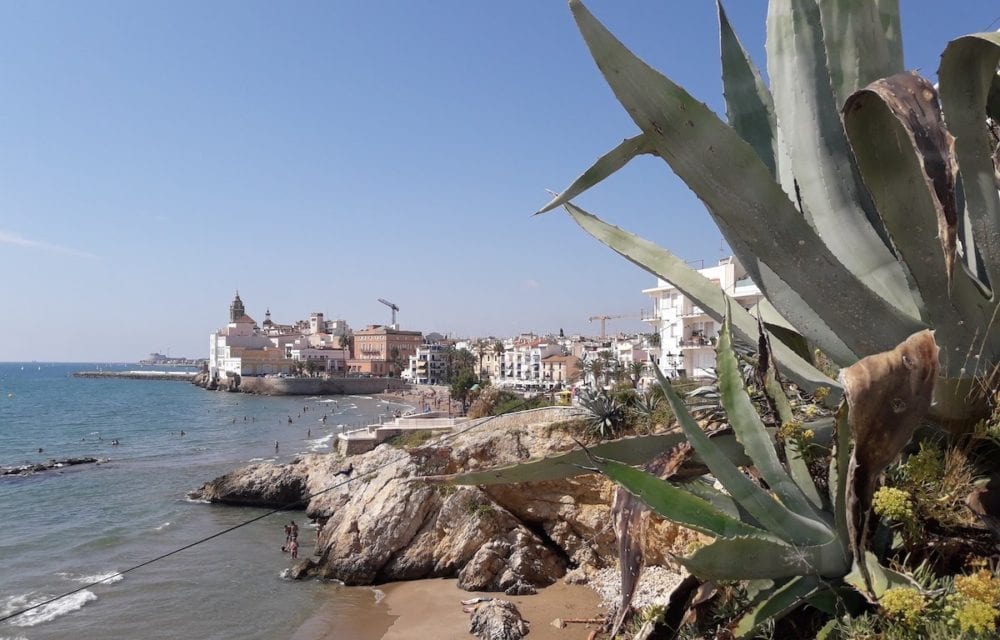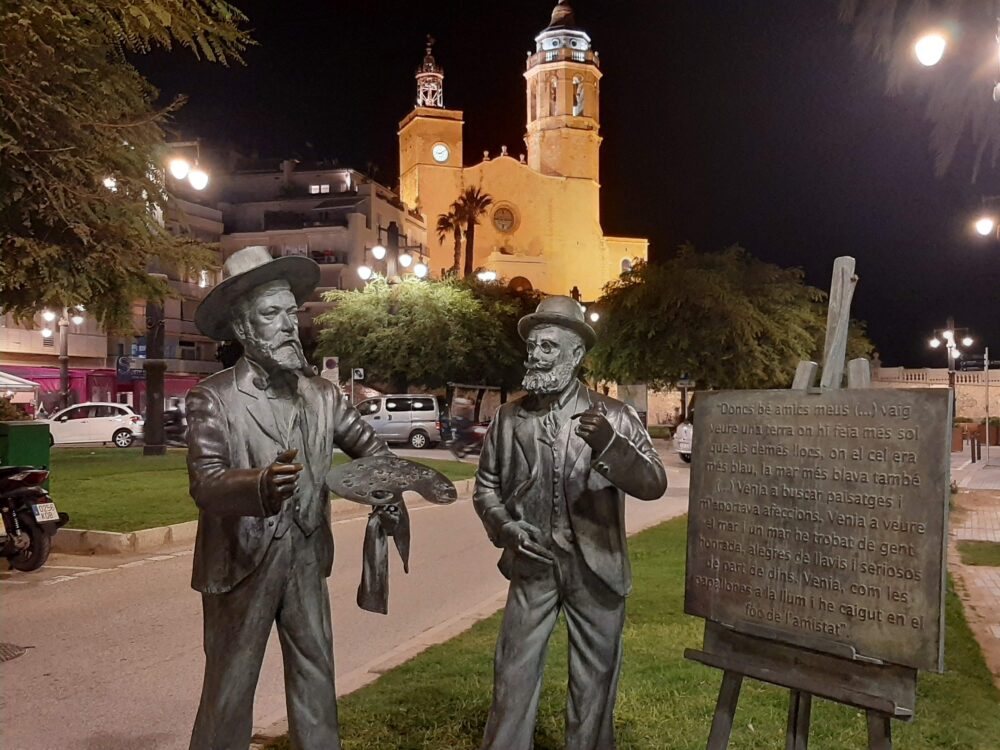Sitges is a beautiful old fishing village that today has become a cosmopolitan seaside town and a popular summer resort. It´s located only 34 km south of Barcelona and very easy to reach by train. The trip takes around half an hour.
Sitges retain a relaxed, small-town feel, and its narrow streets lined with whitewashed houses near the promenade make strolling enjoyable.
-
What to know about Sitges
The word Sitges comes from Sitja, which in Catalan is a “silo”; the tanks were excavated on the ground hundreds of years ago to be used to store grain and other food.
The population of Sitges in 2021 is around 30,000 inhabitants, which in summer can be 4 times higher with vacationers. Curiously, 35% of its population is foreigners: Netherlands, Great Britain, France, and Scandinavian countries, people probably attracted by the good weather and the Mediterranean Sea.
Today, its economy is based mainly on tourism and culture.
Since the 1960s, it has become a popular gay resort, and many shops and bars are oriented to the gay community. Sitges is a good example of respect and good coexistence of its citizens.

-
What to see in Sitges
There are lots of nice shops, restaurants, terraces, and clean and sandy beaches.
It has become one of the most expensive towns of Spain to live in.
Colonial buildings in Sitges
In Sitges, there are beautiful mansions designed in Colonial style and built during the 1800s by the so-called “Los americanos”. They were the young men that had left years before from Sitges to the South-American colonies (Cuba, Puerto Rico…) to try to make business there, and after returning with their fortune from their American adventure, commissioned large mansions to show their success.
Origins of the Bacardi Rum
One of these locals who succeeded was Mr. Facundo Bacardí Massó who left Sitges and who started making rum in Santiago de Cuba in 1862, his rum is drunk nowadays all around the world under the world-known brand Bacardí.
Art in Sitges: Santiago Rusiñol, Cau Ferrat Museum and Film Festival
The roots of Sitges´ artsy reputation date back to the late 19th century when Catalan painter and writer Santiago Rusiñol took up residence here attracting the bohemian art world and setting the trend that would lead Sitges to where it is today. For many, the secret lies in its light, almost 300 sunny days a year, and its temperature with mild winters and moderate summers.
World-famous is the Horror and Fantasy Film Festival, specializing in fantasy and horror movies, which takes place in Sitges each month of October since 1967.

-
What to eat in Sitges
Xató is the most typical dish.
Its main ingredients are escarole salad, cod, tuna, anchovies, aubergine and black olives. However, the essence of the dish is its sauce, made with scalded chilies, toasted almonds, garlic, olive oil, salt, vinegar and hot peppers.
Apart from the xató, there are some other typical Catalan sailor’s dishes that are very common in Sitgetan cuisine and which turn fish into an unequivocal sign of identity. Rice in the Sitgetan way, stewed sepia with potatoes and allioli (typical Catalan garlic sauce).
Bull de tonyina is a typical sailors´ dish made with tuna fish.
Fideuada or fideuà is a typical sailors´ dish similar to paella, but with noodles and seafood.
Stuffed peppers with cod.
Such variety guarantees the extraordinary richness and singularity of Catalan’s and Sitgetan’s gastronomy.
Enjoy a beautiful day trip from Barcelona visiting two of the must-see places near Barcelona: Abbey of Montserrat and the charming seaside village of Sitges. Take a look at the tour description here.
